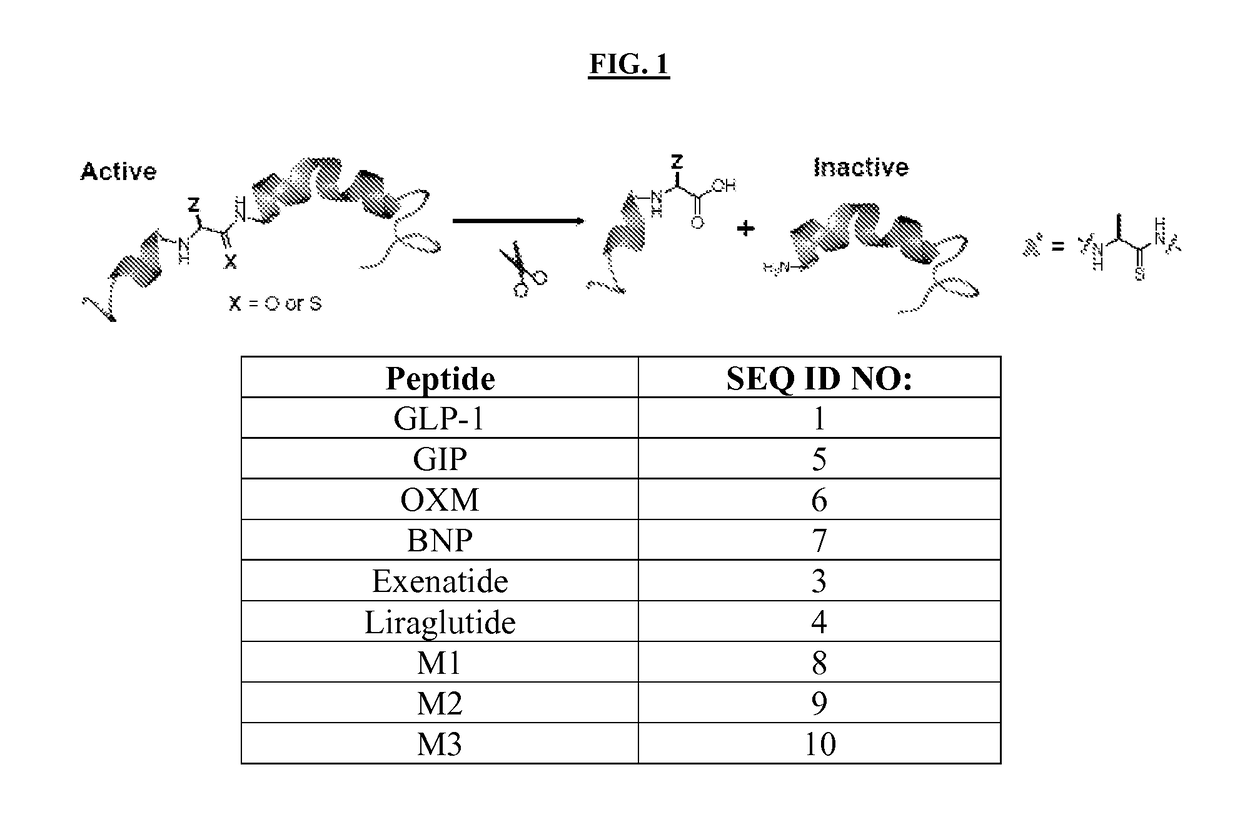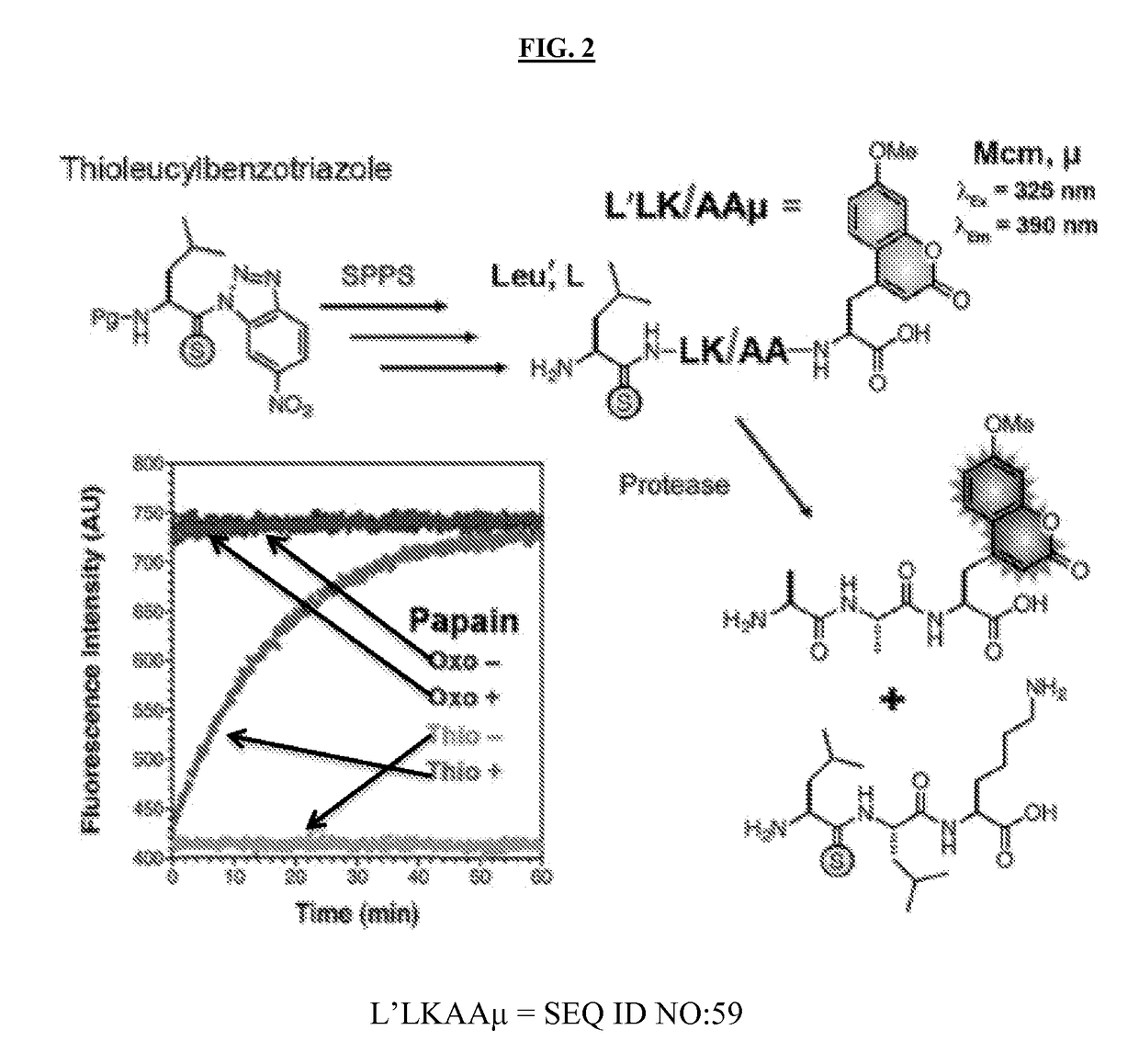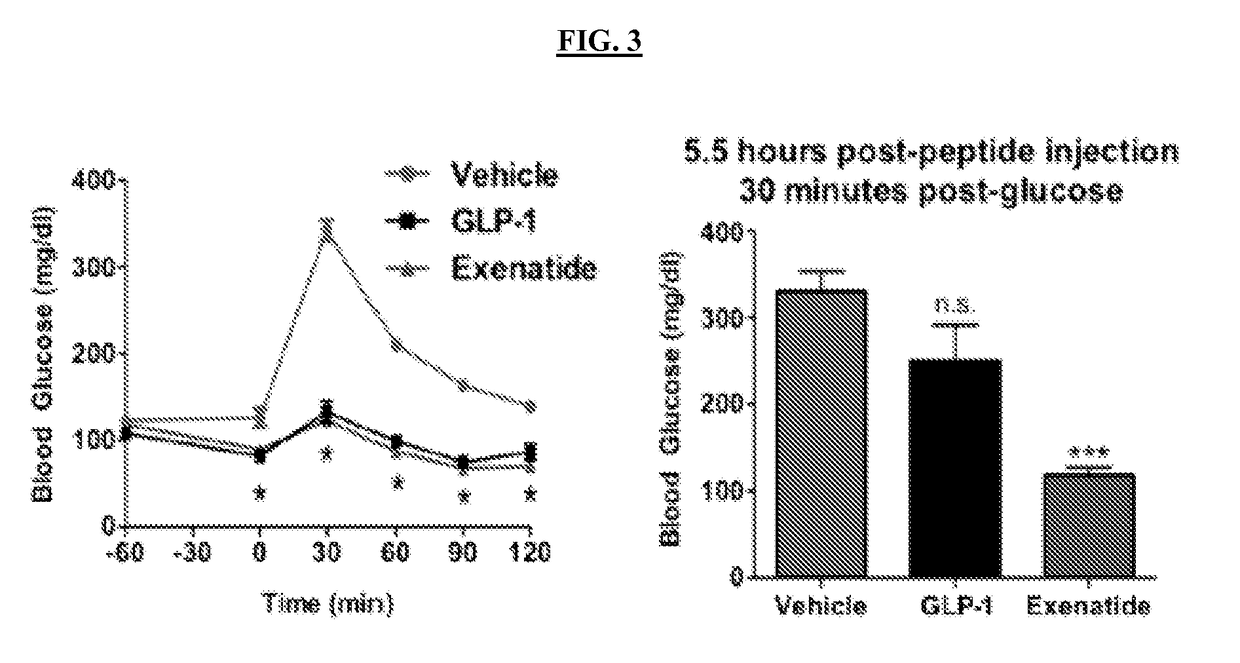Thioamide-modified peptides and uses thereof
a technology of thioamide and peptides, which is applied in the direction of peptides, hormone peptides, peptides/protein ingredients, etc., can solve the problems of poor drug effect, unfavorable pharmacokinetics, time-consuming and often met with failure, etc., to suppress glucagon secretion, stimulate insulin production, and inhibit gastric emptying
- Summary
- Abstract
- Description
- Claims
- Application Information
AI Technical Summary
Benefits of technology
Problems solved by technology
Method used
Image
Examples
experimental examples
[0221]The invention is now described with reference to the following Examples. These Examples are provided for the purpose of illustration only, and the invention is not limited to these Examples, but rather encompasses all variations that are evident as a result of the teachings provided herein.
Materials and Methods
[0222]In these studies Mus musculus; lean and diet-induced obese, DIO, C57BL6 / J mice are used. In certain embodiments, mice may be used to study the ability of the peptides of the invention to regulate blood glucose levels during a glucose tolerance test. Mice are injected intraperitoneally using 28 gauge insulin syringes with the peptides dissolved in saline, administered in a volume corresponding to 0.5% of body mass. Mice are monitored following compound administration for any signs of adverse reactions.
[0223]Thirty minutes after injection with the peptides, mice are injected intraperitoneally with a sterile solution of 20% D-glucose in saline (1-2 g / kg) using a 28 ga...
example 1
Selected Thioamide Studies
[0225]Thioamides can quench fluorophores such as methoxycoumarin (Mcm, μ), and this quenching can be used to monitor protein folding and stability (Goldberg, et al., 2014, J. Am. Chem. Soc. 135:2086-2093). Thioamides may be incorporated into peptides made on solid phase using benzotriazole precursors like the thioleucine precursor shown in FIG. 2. Thioamide-containing peptides of up to 35 residues can be synthesized in reasonable yields (˜50% of the corresponding oxoamide peptide), making synthesis of any of the thioamide peptide hormones considered herein straightforward (Goldberg, et al., 2010, J. Am. Chem. Soc. 132:14718-14720). Thioamides can be used in fluorogenic constructs to monitor proteolysis by relief of a quenching interaction (FIG. 2). Cleavage of the substrate L′LKAAμ by papain is shown in FIG. 2. No change in fluorescence was seen for the oxoamide (LLKAAμ), but it was proteolyzed at the same rate as the thiopeptide in an HPLC assay. The thioa...
example 2
In Vivo GLP-1 Activity Assays
[0226]Physiological assays are used to assess the activity of thioamide variants of GLP-1 in regulating glucose control. The activity and half-lives of GLP-1 and exenatide may be determined using glucose tolerance tests (GTTs). In these experiments, mice are injected intraperitoneally (i.p.) with the peptide 60 minutes prior to administration of a glucose challenge (time=0 minutes). Blood glucose levels are measured at -60, 0, 30, 60, 90 and 120 minutes. GLP-1 and exenatide greatly improved glucose tolerance and led to significantly lower blood glucose levels at every time point (FIG. 3, left). This demonstrate that GTTs may be used to measure the in vivo activity of GLP-1 peptides, as well as thioamide GLP-1.
[0227]In addition, a GTT may be used to measure changes in the half-life of the bioactive peptides, by increasing the time between the injection of the peptide and the injection of glucose. In an experiment, GLP-1 or exenatide was injected, and then...
PUM
| Property | Measurement | Unit |
|---|---|---|
| weight loss | aaaaa | aaaaa |
| time | aaaaa | aaaaa |
| time | aaaaa | aaaaa |
Abstract
Description
Claims
Application Information
 Login to View More
Login to View More - R&D
- Intellectual Property
- Life Sciences
- Materials
- Tech Scout
- Unparalleled Data Quality
- Higher Quality Content
- 60% Fewer Hallucinations
Browse by: Latest US Patents, China's latest patents, Technical Efficacy Thesaurus, Application Domain, Technology Topic, Popular Technical Reports.
© 2025 PatSnap. All rights reserved.Legal|Privacy policy|Modern Slavery Act Transparency Statement|Sitemap|About US| Contact US: help@patsnap.com



